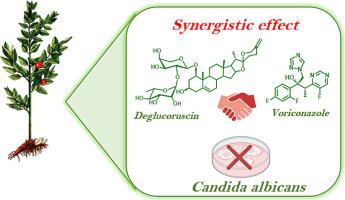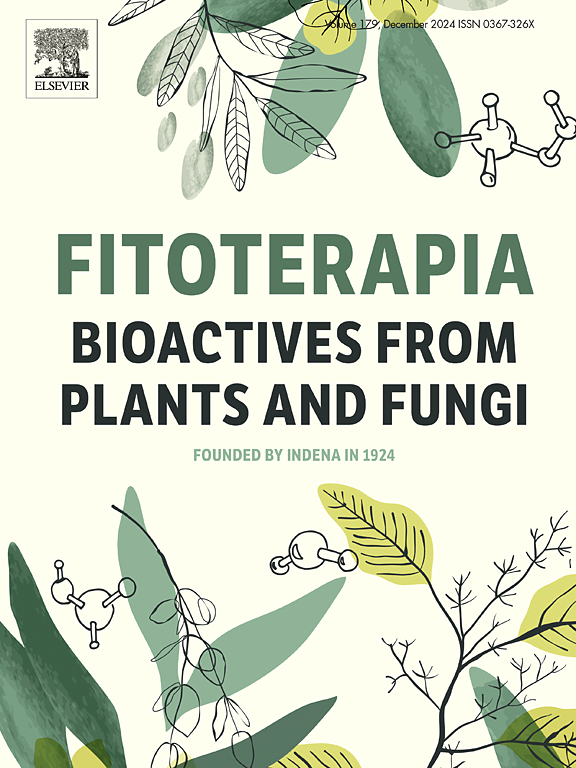植物源性去糖苷与常规抗菌剂联合抗金黄色葡萄球菌和白色念珠菌的协同作用。
IF 2.6
3区 医学
Q3 CHEMISTRY, MEDICINAL
引用次数: 0
摘要
通过对针叶Ruscus aculeatus的根状茎和根进行详细的植物化学研究,分离出15种纯化合物,分别属于糠甾醇和螺甾醇苷类。其中,鉴定出一种新的糠甾醇皂苷(1),以及12种已知的糠甾醇(2-8)和螺甾醇(11-15)皂苷和两种硫酸糖苷(9-10)。所有分离化合物的结构解析是通过全面的一维和二维核磁共振光谱分析完成的,并辅以质谱分析。针叶Ruscus aculeatus的CHCl3提取物及其主要代谢物螺醇衍生物(12)表现出较弱的抗菌活性。特别有趣的是,当化合物12与伏立康唑(voriconazole, VOR)合用时,对耐唑白色念珠菌ATCC 10231菌株显示出显著的抑制作用,表明其具有协同效应,强调了其恢复抗真菌功效和对抗耐药机制的潜力。这些发现突出了化合物12作为抗真菌治疗,特别是抗耐药念珠菌菌株的有希望的佐剂候选物。本文章由计算机程序翻译,如有差异,请以英文原文为准。

Synergistic effect of plant-derived deglucoruscin in combination with conventional antimicrobials against Staphylococcus aureus and Candida albicans
A detailed phytochemical investigation of rhizomes and roots of Ruscus aculeatus led to the isolation of fifteen pure compounds, belonging to the furostanol and spirostanol glycoside classes. Among them, one novel furostanol saponin (1) was identified, alongside twelve known furostanol (2–8) and spirostanol (11–15) saponins and two sulphated glycosides (9–10). Structural elucidation of all isolated compounds was accomplished through comprehensive 1D and 2D NMR spectroscopic analyses, complemented by mass spectrometry. The CHCl3 extract of Ruscus aculeatus and its major metabolite, the spirostanol derivative (12), exhibited a weak antimicrobial activity. Of particular interest, compound 12 when co-administered with voriconazole (VOR) showed a significant inhibitory effect against the azole-resistant Candida albicans ATCC 10231 strain, demonstrating a synergistic effect that underscores its potential to restore antifungal efficacy and combat resistance mechanisms.
These findings highlight compound 12 as a promising adjuvant candidate in antifungal therapy, particularly against resistant Candida strains.
求助全文
通过发布文献求助,成功后即可免费获取论文全文。
去求助
来源期刊

Fitoterapia
医学-药学
CiteScore
5.80
自引率
2.90%
发文量
198
审稿时长
1.5 months
期刊介绍:
Fitoterapia is a Journal dedicated to medicinal plants and to bioactive natural products of plant origin. It publishes original contributions in seven major areas:
1. Characterization of active ingredients of medicinal plants
2. Development of standardization method for bioactive plant extracts and natural products
3. Identification of bioactivity in plant extracts
4. Identification of targets and mechanism of activity of plant extracts
5. Production and genomic characterization of medicinal plants biomass
6. Chemistry and biochemistry of bioactive natural products of plant origin
7. Critical reviews of the historical, clinical and legal status of medicinal plants, and accounts on topical issues.
 求助内容:
求助内容: 应助结果提醒方式:
应助结果提醒方式:


